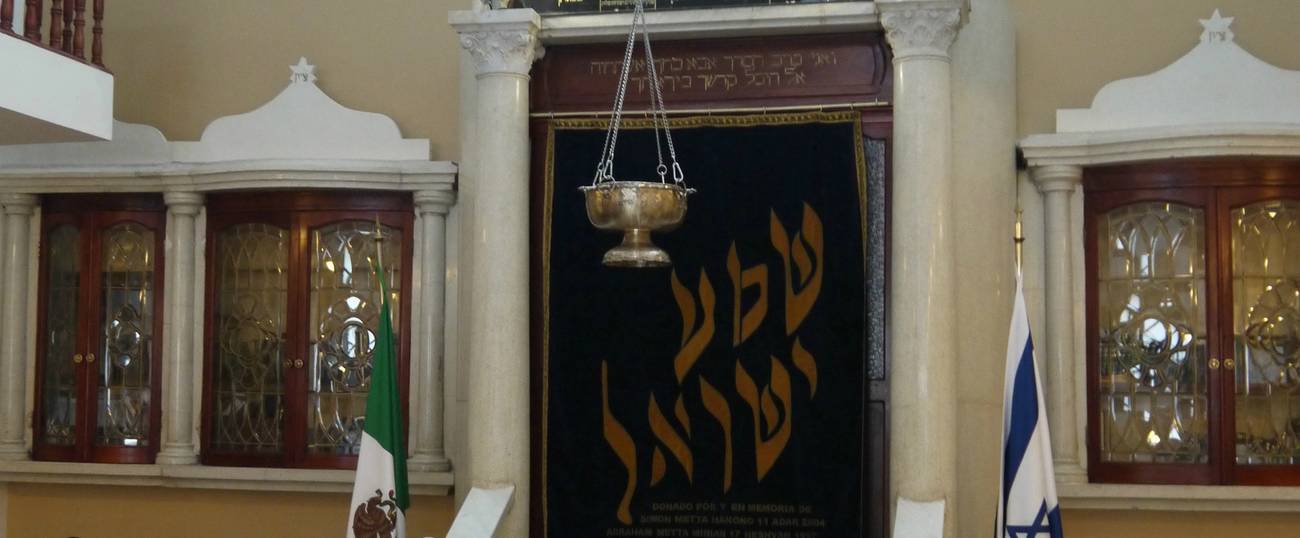Trying to Save Ladino
Sephardic culture conference lands in Mexico City




I expected, over the course of a three-day conference in Mexico City about global Sephardic culture, to hear more Ladino. But I was surprised, if not a little disappointed, to hear mostly Spanish being spoken at Erensya, an annual meeting run by the Madrid-based Sepharad-Israel Center.
Founded in 2006, the SIC’s flagship program, the Erensya (“Heritage,” in Ladino) summit, is an annual meeting of Sephardic dignitaries that has previously been hosted in Bulgaria, Turkey, and Spain. This year’s conference, a joint effort with the Latin American Sephardic Federation, brought the summit to Mexico City, my hometown, where an estimated 65 percent of the city’s 40,000 Jews are of Sephardic descent. (Their Ladino-speaking ancestors were exiled during the Spanish Inquisition.) The SIC’s mission—which involves the preservation of Ladino, the language spoken by Jews in medieval Spain—has lately taken on an added importance since Spain, in 2015, passed a law that enables descendants of Jews exiled during the Inquisition to become naturalized citizens.
Last week’s gathering took place mainly in Mexico City’s Sephardic Community Center, a massive suburban complex that doubles as a Jewish school, museum, wedding hall, and synagogue; it also serves as the headquarters of Universidad Hebraica, the only college in the city that offers a master’s in Jewish Studies.
Erensya’s co-organizer, Gaton Maya, told me that, when his grandmother arrived in Mexico from Turkey, she was very excited: She had never been to a Spanish-speaking country and believed that everyone in Mexico spoke Ladino. The language’s similarity with Spanish, he said, explained the lack of Ladino speakers at the gathering: In a sense, they had merged with their surroundings.
Despite the lack of Ladino, the conference’s events provided a window into Sephardic scholars and dignitaries from around the world—Panama, Brazil, Uruguay, Turkey, Great Britain, Spain, Macedonia, Chile, Colombia, and Serbia. There was Alicia Gojman, a historian from Mexico’s National Autonomous University, who gave a talk about the history of the Jews in colonial Spain; performances by Paco Diez, a non-Jewish Spanish musician who specializes in Sephardic music and who has been nominated for the Premio Principe the Asturias (the Spanish-speaking world’s Nobel Prize); and poetry readings by Jenny Serur, the vice president of the Mexico-Israel Institute, located in the historical city center.
Also in attendance was Barcelona marketing mogul Luis Bassat, who presented a book on his family’s history, as well as the current mayors of former Sephardic towns in Spain like Estrella and Castrillo Mata Judíos—which translates to “Camp Kill Jews” and changed its name to something less controversial in 2015: Castrillo Mota de Judios (Jews’ Hill Camp).
Attendees were received magnanimously by Mexico City’s mayor Miguel Angel Mancera. At the inauguration, Miguel de Lucas, the current director of the SIC—who previously worked in the Spanish embassies of Nigeria, Paraguay, and Cameroon—stated that, when he first took on the job nine years ago he expected the Sephardic diaspora to be reticent of Spain’s efforts to mend its “dark past.” Instead, wherever he went, he said, he had been greeted with open arms.
Also on the agenda was a tour through the historic center and a visit to Monte Sinai, established in 1918 by Jews coming mostly from the Middle East, many of whom were Ladino speakers, and a reception in the Spanish Embassy. The tour, managed by Monica Unikel-Fasja, provided an eye-opening account of La Merced, Mexico’s immigrant quarter at the beginning of the 20th century.
Upon arriving at the Sephardic Center, I was led with other attendees through the center’s Holocaust museum, an immersive, harrowing, superbly produced experience designed specifically for children. In the exhibition, one follows the life of Jack, a fictitious Jewish boy, from his house to the ghetto, through a concentration camp and toward liberation. As I walked silently with other attendees, I heard a small woman with curly black hair crying in the back, talking, as if to herself, in Ladino.
Her name is Drita Tutonović, and she had traveled to Mexico City from Serbia. Her parents survived Bergen-Belsen and were transferred to a labor camp, where she was born. They escaped in 1943, she said, and, after 17 days and nights of wandering, arrived in Milan. Today, Tutonović is a philologist, musician, and the author of a Serbian-Ladino dictionary and many other Ladino-language books. She said she had attended multiple Sephardic congresses around the world, but none on the other side of the Atlantic. I asked her if she thought there was anything unique about this meeting in Mexico City. “No,” she said. “All over the world, the Sephardic diaspora is fighting with the same issue: how to save Ladino.”
Related: Telling Holocaust Stories—in Ladino
Seattle’s Sephardi Jews Brought Us Starbucks: Now They’re Trying to Bring Back Ladino
Alan Grabinsky is a freelance writer and journalist based in Mexico City, covering Jewish life and urban issues for international media.